In Situ Measurement of Alkali Metals in an MSW Incinerator Using a Spontaneous Emission Spectrum
Abstract
:1. Introduction
2. Experimental Setup
3. Measurement Principle
4. Results and Analysis
4.1. MSW Flame Spectra
4.2. Temperature, Emissivity, and Alkaline Metal Emission Lines from MSW Flame Spectra
4.3. Comparison of Measured Results and Operating Parameters of the Incinerator
5. Conclusions
Acknowledgments
Author Contributions
Conflicts of Interest
References
- Ruth, L.A. Energy from municipal solid waste: A comparison with coal combustion technology. Prog. Energy Combust. Sci. 1998, 24, 545–564. [Google Scholar] [CrossRef]
- Zhao, X.G.; Jiang, G.W.; Li, A.; Li, Y. Technology, cost, a performance of waste-to-energy incineration industry in China. Renew. Sustain. Energy Rev. 2016, 55, 115–130. [Google Scholar]
- Poole, D.; Sharifi, V.; Swithenbank, J.; Argent, B.; Ardelt, D. On-line detection of metal pollutant spikes in MSW incinerator flue gases prior to clean-up. Waste Manag. 2007, 27, 519–532. [Google Scholar] [CrossRef] [PubMed]
- Monkhouse, P. On-line spectroscopic and spectrometric methods for the determination of metal species in industrial processes. Prog. Energy Combust. Sci. 2011, 37, 125–171. [Google Scholar] [CrossRef]
- Vassilev, S.V.; Vassileva, C.G. Methods for characterization of composition of fly ashes from coal-fired power stations: A critical overview. Energy Fuels 2005, 19, 1084–1098. [Google Scholar] [CrossRef]
- Schuler, F.; Rampp, F.; Martin, J.; Wolfrum, J. TACCOS—A thermography-assisted combustion control system for waste incinerators. Combust. Flame 1994, 99, 431–439. [Google Scholar] [CrossRef]
- Manca, D.; Rovaglio, M. Infrared thermographic image processing for the operation and control of heterogeneous combustion chambers. Combust. Flame 2002, 130, 277–297. [Google Scholar] [CrossRef]
- Kohse-Höinghaus, K.; Barlow, R.S.; Aldén, M.; Wolfrum, J. Combustion at the focus: Laser diagnostics and control. Proc. Combust. Inst. 2005, 30, 89–123. [Google Scholar] [CrossRef]
- Ballester, J.; García-Armingol, T. Diagnostic techniques for the monitoring and control of practical flames. Prog. Energy Combust. Sci. 2010, 36, 375–411. [Google Scholar] [CrossRef]
- Broida, H.P. The spectroscopy of flames. Combust. Flame 1957, 1, 487–488. [Google Scholar] [CrossRef]
- Romero, C.; Li, X.; Keyvan, S.; Rossow, R. Spectrometer-based combustion monitoring for flame stoichiometry and temperature control. Appl. Therm. Eng. 2005, 25, 659–676. [Google Scholar] [CrossRef]
- Keyvan, S.; Rossow, R.; Romero, C. Blackbody-based calibration for temperature calculations in the visible and near-IR spectral ranges using a spectrometer. Fuel 2006, 85, 796–802. [Google Scholar] [CrossRef]
- Cai, X.S.; Cheng, Z.H.; Wang, S.M. Flame measurement and combustion diagnoses with spectrum analysis. AIP Conf. Proc. 2007, 914, 60. [Google Scholar]
- Sun, Y.P.; Lou, C.; Zhou, H.C. A simple judgment method of gray property of flames based on spectral analysis and the two-color method for measurements of temperatures and emissivity. Proc. Combust. Inst. 2011, 33, 735–741. [Google Scholar] [CrossRef]
- Parameswaran, T.; Hughes, R.; Gogolek, P.; Hughes, P. Gasification temperature measurement with flame emission spectroscopy. Fuel 2014, 134, 579–587. [Google Scholar] [CrossRef]
- Christian, G.P.; Alexander, C.W.; David, M.S.; Donaldson, A.B.; Jonathan, L.H. Aluminum Flame Temperature Measurements in Solid Propellant Combustion. Appl. Spectrosc. 2014, 68, 362–366. [Google Scholar]
- Yan, W.J.; Zhou, H.C.; Jiang, Z.W.; Lou, C.; Zhang, X.K.; Chen, D.L. Experiments on measurement of temperature and emissivity of municipal solid waste (MSW) combustion by spectral analysis and image processing in visible spectrum. Energy Fuels 2013, 27, 6754–6762. [Google Scholar] [CrossRef]
- Arias, L.; Sbarbaro, D.; Torres, S. Removing baseline flame’s spectrum by using advanced recovering spectrum techniques. Appl. Opt. 2012, 51, 6111–6116. [Google Scholar] [CrossRef] [PubMed]
- Draper, T.S.; Zeltner, D.; Tree, D.R.; Xue, Y.; Tsiava, R. Two-dimensional flame temperature and emissivity measurements of pulverized oxy-coal flames. Appl. Energy 2012, 95, 38–44. [Google Scholar] [CrossRef]
- Lu, G.; Yan, Y.; Riley, G.; Bheemul, H.C. Concurrent measurement of temperature and soot concentration of pulverized coal flames. IEEE Trans. Instrum. Meas. 2002, 51, 990–995. [Google Scholar]
- Zhao, H.; Ladommatos, N. Optical diagnostics for soot and temperature measurement in diesel engines. Prog. Energy Combust. Sci. 1998, 24, 221–255. [Google Scholar] [CrossRef]
- He, Y.; Zhu, J.J.; Li, B.; Wang, Z.H.; Li, Z.S.; Aldén, M.; Cen, K.F. In-situ measurement of sodium and potassium release during oxy-fuel combustion of lignite using laser-induced breakdown spectroscopy: Effects of O2 and CO2 concentration. Energy Fuels 2013, 27, 1123–1130. [Google Scholar] [CrossRef]
- Wang, H.J.; Huang, Z.F.; Wang, D.D.; Luo, Z.X.; Sun, Y.P.; Fang, Q.Y.; Lou, C.; Zhou, H.C. Measurements on flame temperature and its 3D distribution in a 660 MW archfired coal combustion furnace by visible image processing and verification by using an infrared pyrometer. Meas. Sci. Technol. 2009, 20, 114006. [Google Scholar]
- Frandsen, F.J.; Lith, S.C.; Korbee, R.; Yrjas, P.; Backman, R.; Obernberger, I.; Brunner, T.; Jöller, M. Quantification of the release of inorganic elements from biofuels. Fuel Process. Technol. 2007, 88, 1118–1128. [Google Scholar] [CrossRef]
- Wang, C.A.; Jin, X.; Wang, Y.K.; Yan, Y.; Cui, J.; Liu, Y.H.; Che, D.F. Release and transformation of sodium during pyrolysis of Zhundong Coals. Energy Fuels 2015, 29, 78–85. [Google Scholar] [CrossRef]
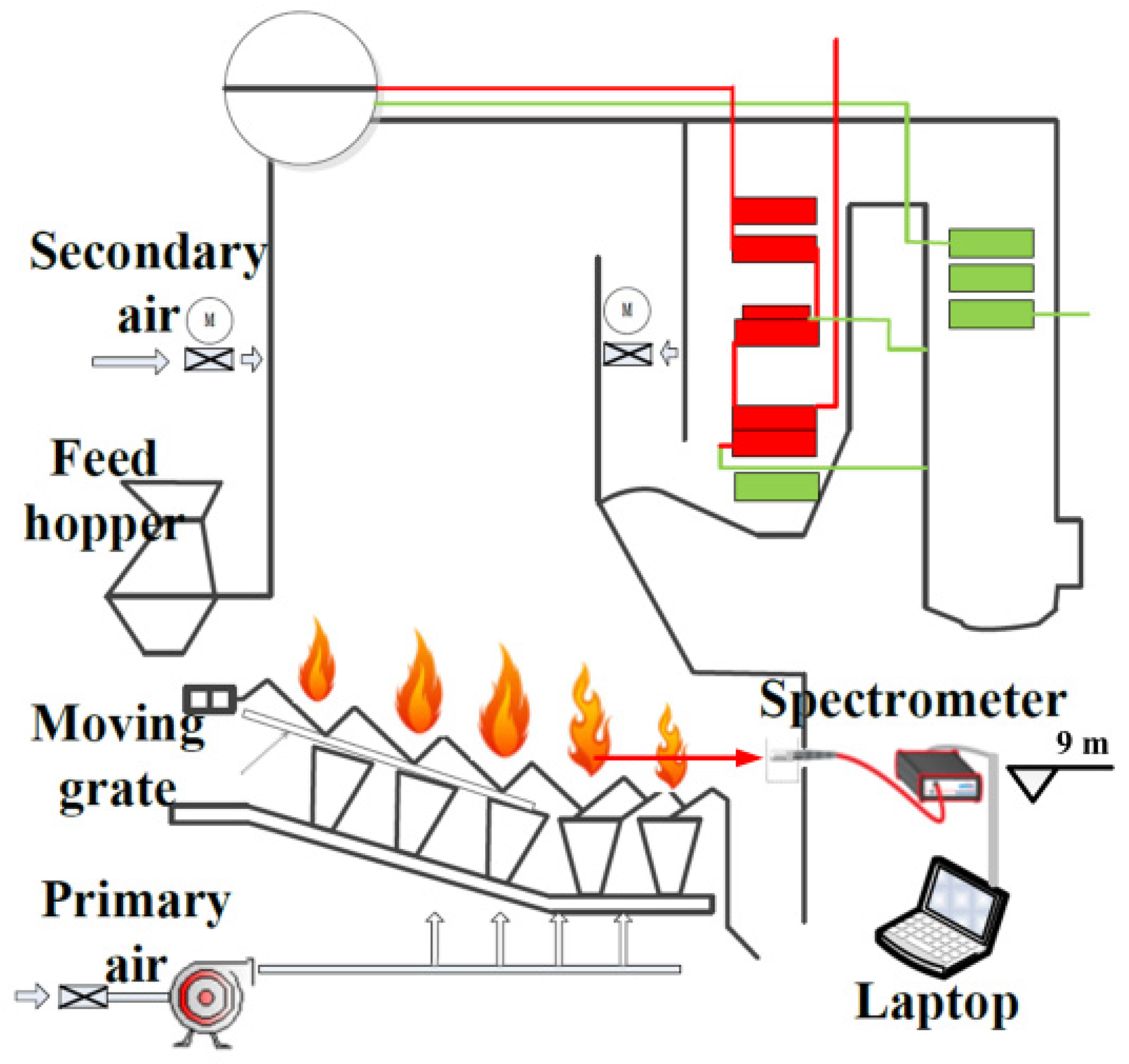
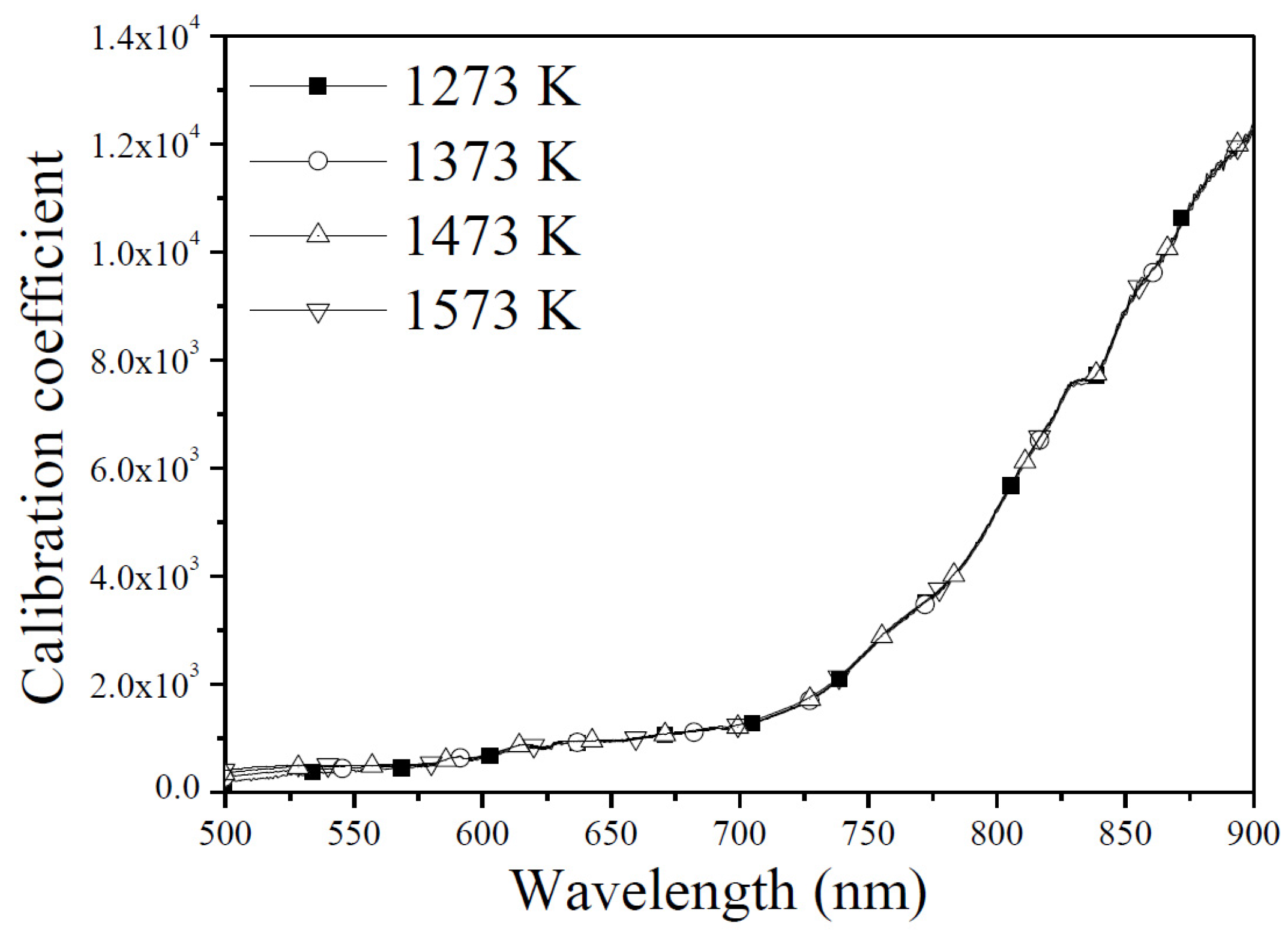

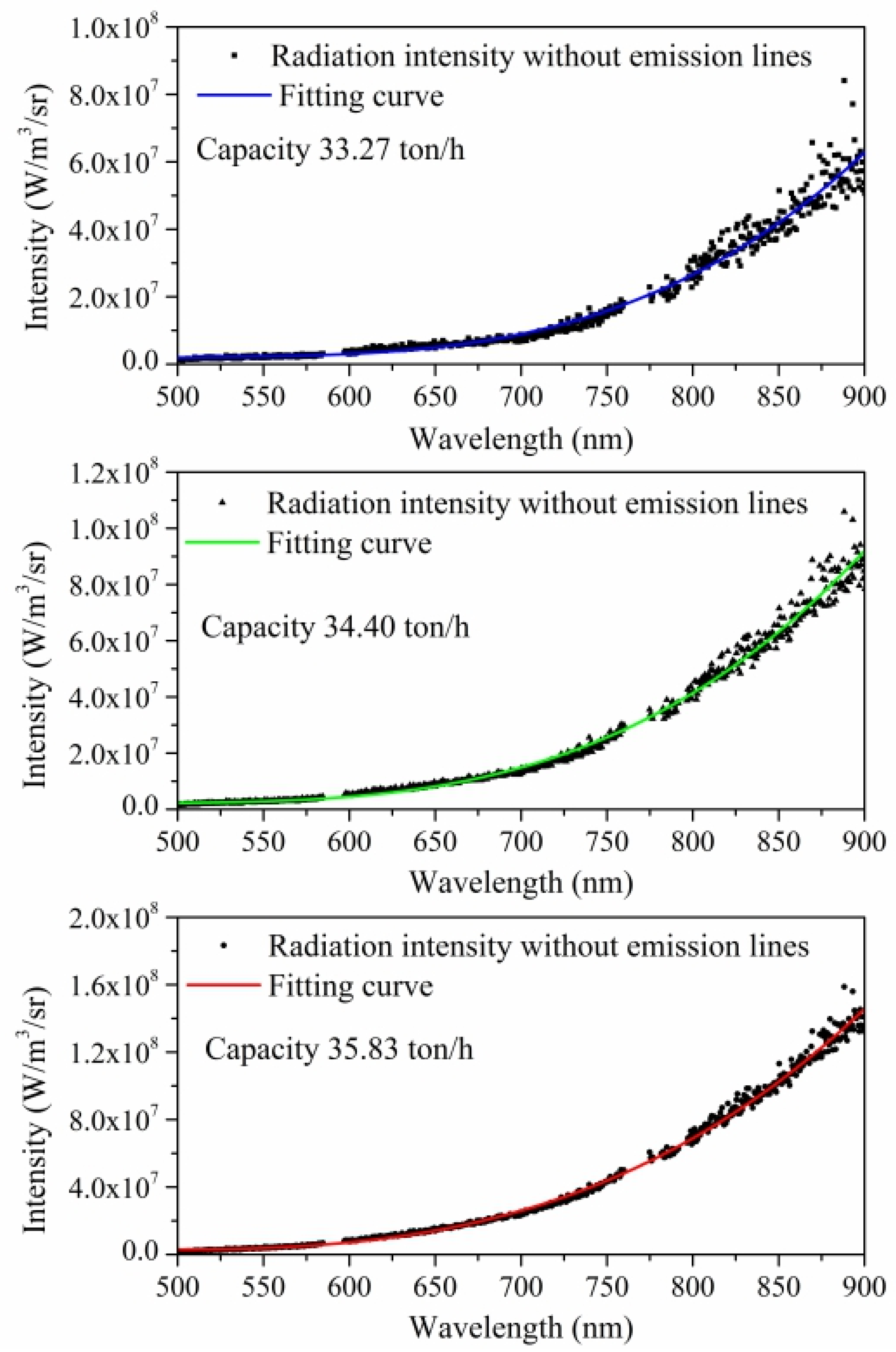

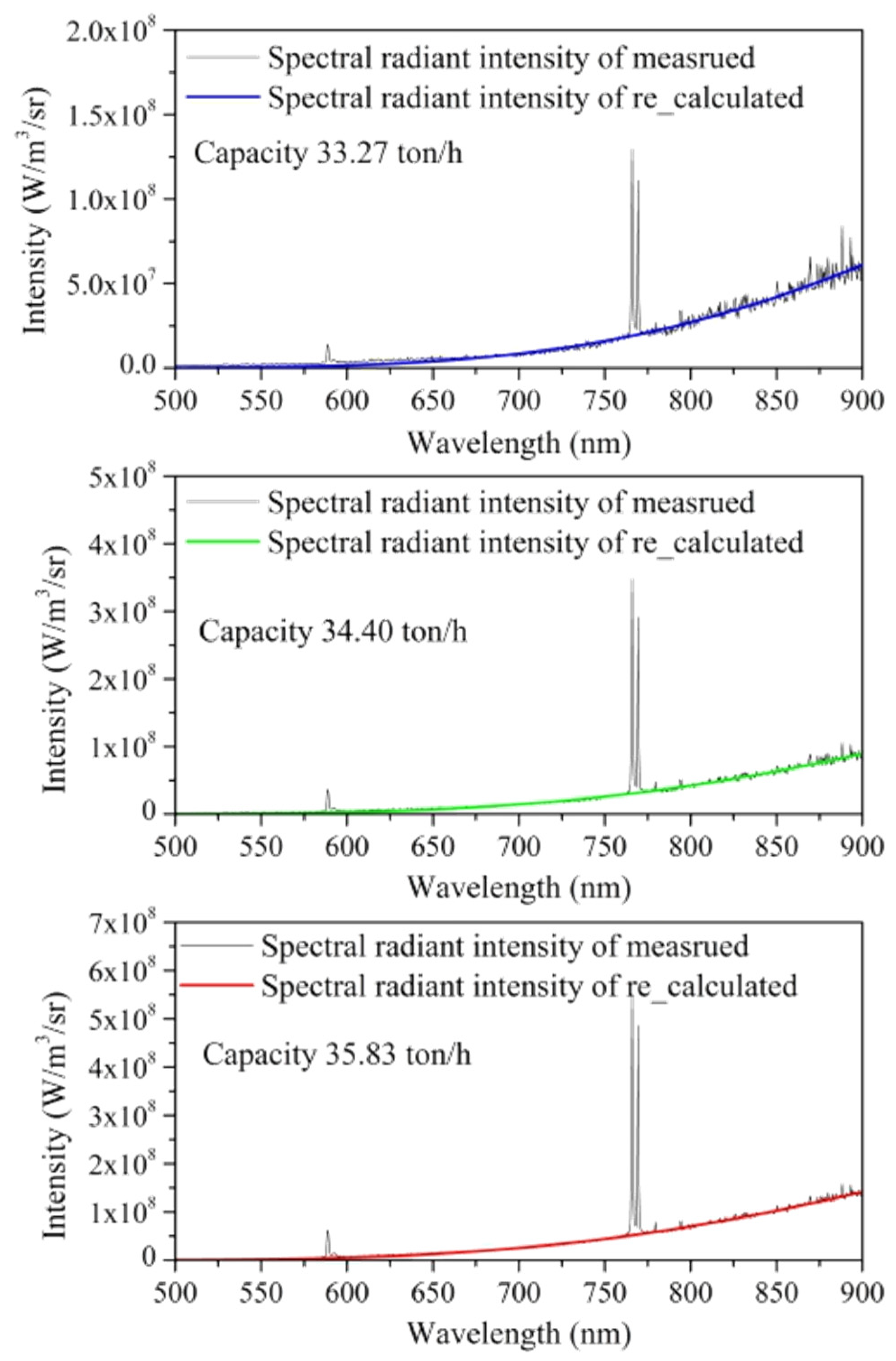


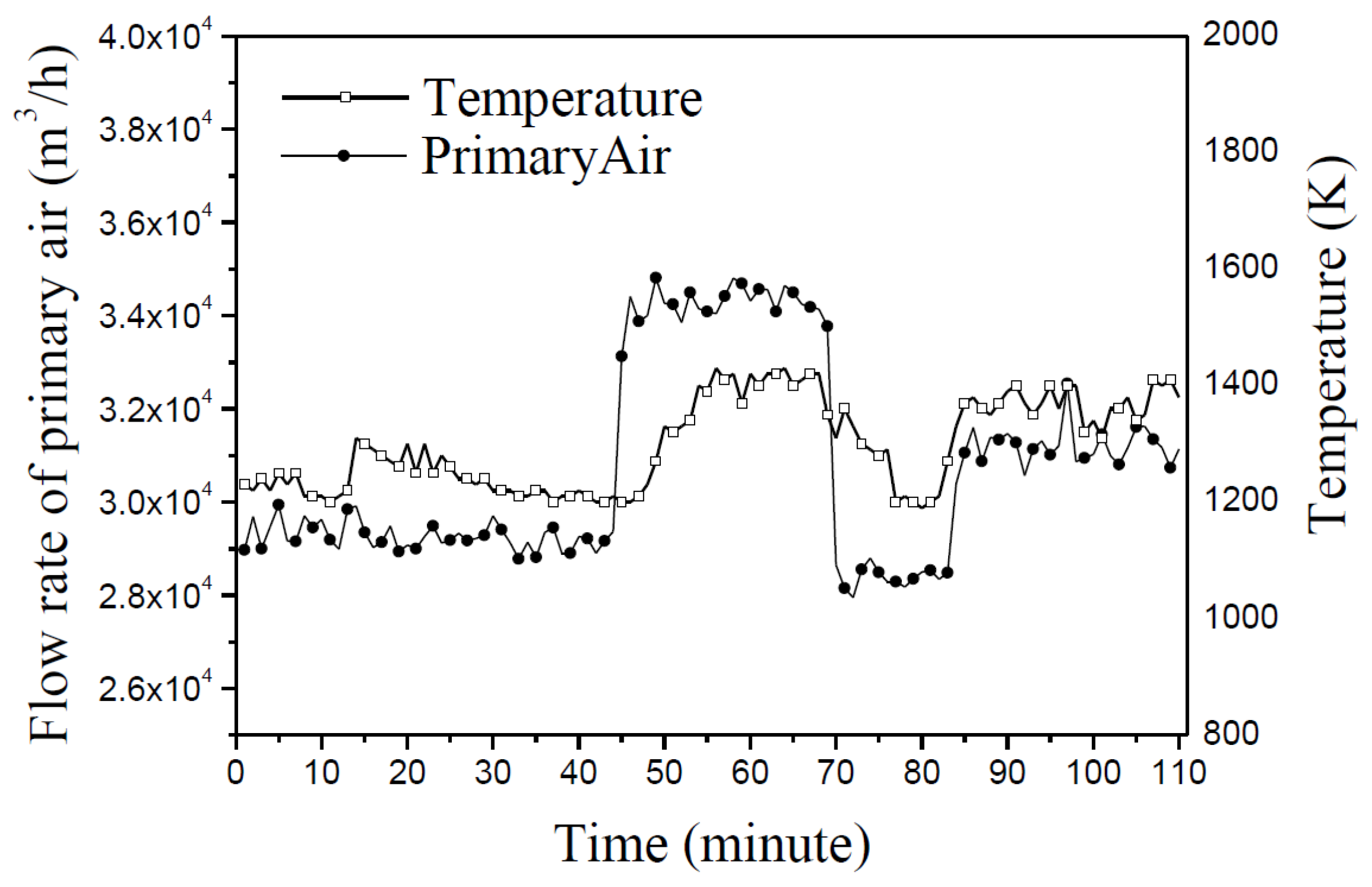
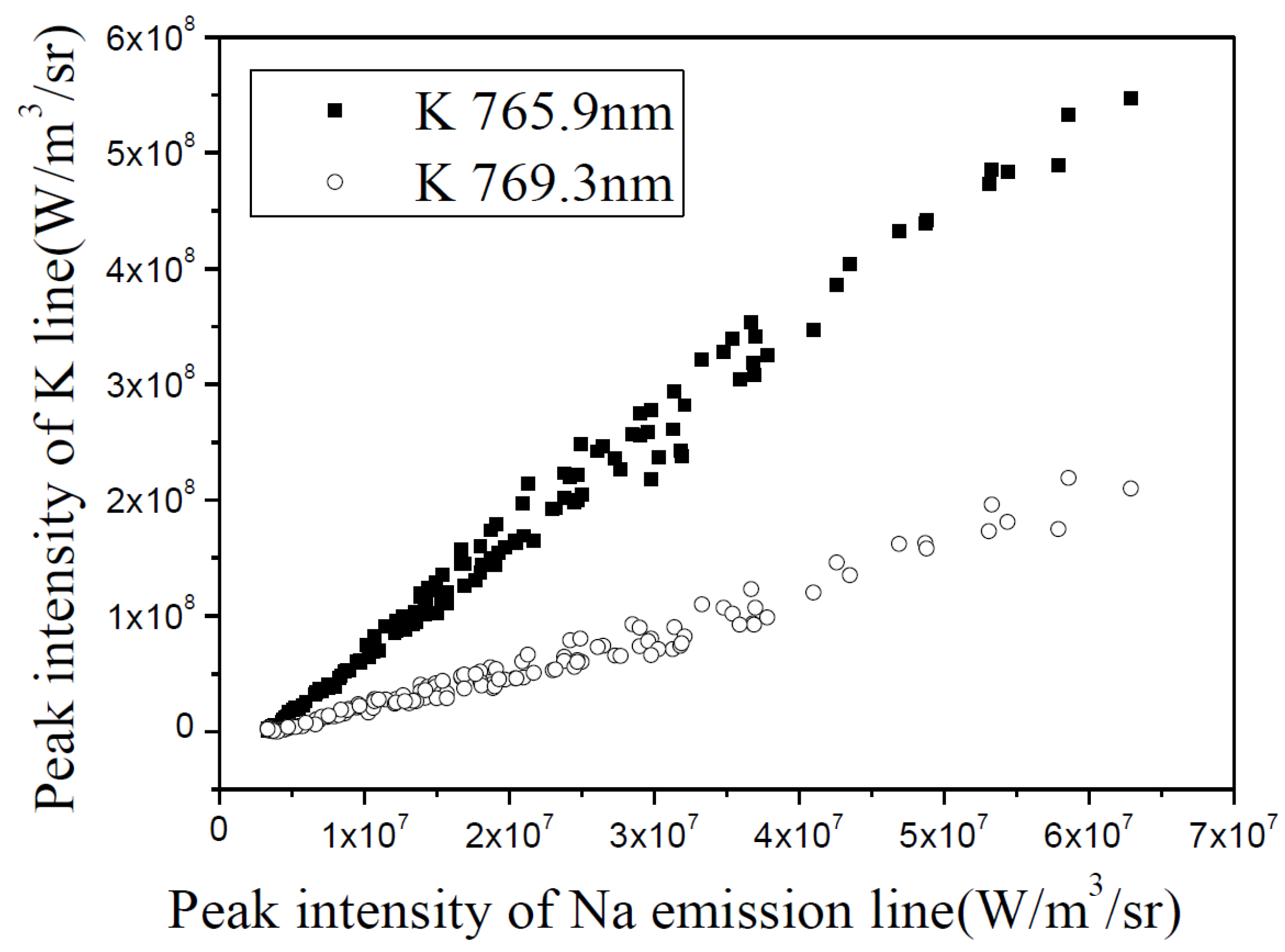
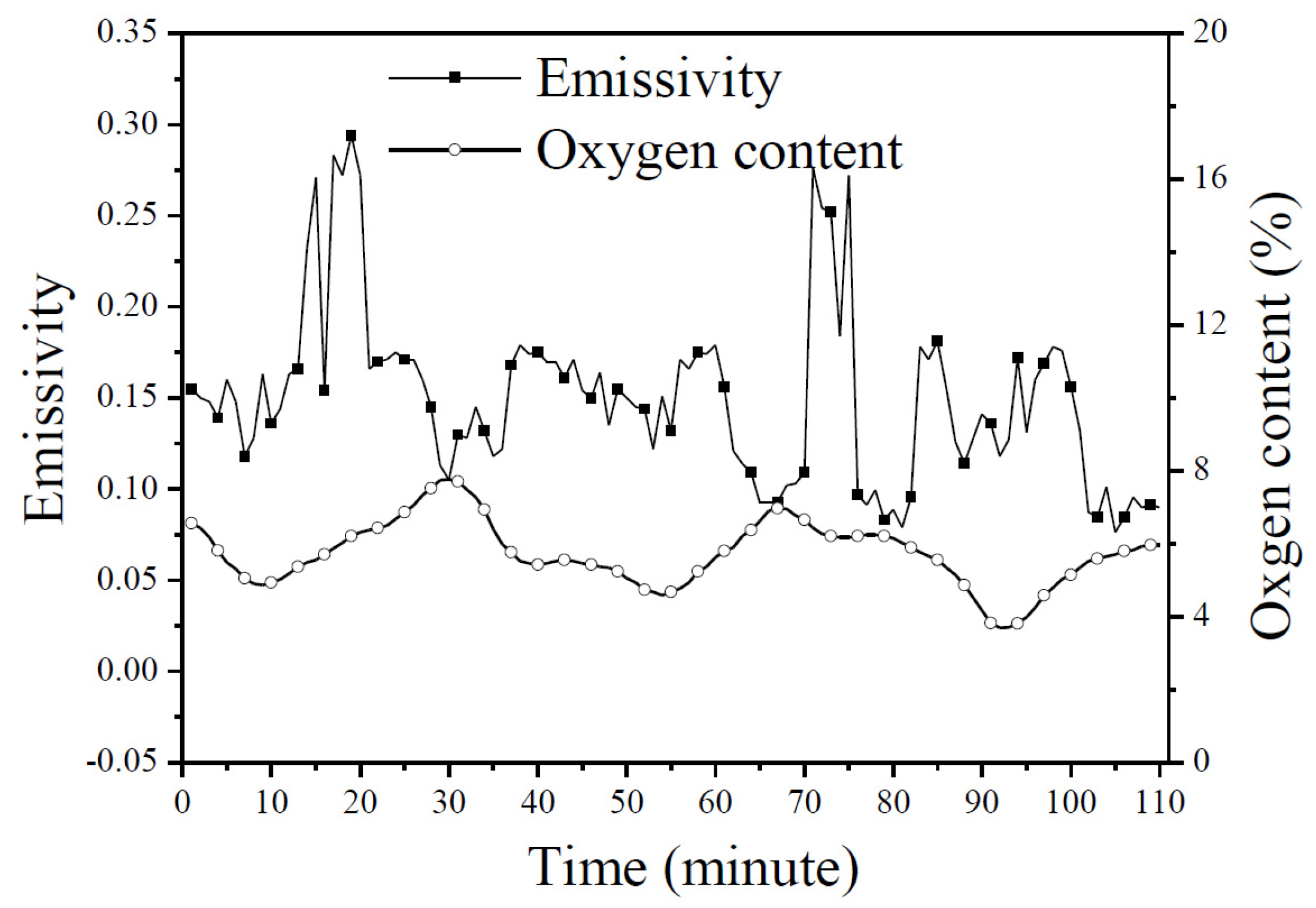
| No. | Moisture | Ash | Volatile | Fixed Carbon | Total Sulfur | Hydrogen | Calorific Value |
|---|---|---|---|---|---|---|---|
| 1 | 3.62 | 55.62 | 29.64 | 11.12 | 0.32 | 2.50 | 6.40 MJ/kg |
| 2 | 3.59 | 54.63 | 29.72 | 12.06 | 0.41 | 2.60 | 6.63 MJ/kg |
| 3 | 3.68 | 55.46 | 28.82 | 12.04 | 0.38 | 2.46 | 6.66 MJ/kg |
© 2017 by the authors. Licensee MDPI, Basel, Switzerland. This article is an open access article distributed under the terms and conditions of the Creative Commons Attribution (CC BY) license ( http://creativecommons.org/licenses/by/4.0/).
Share and Cite
Yan, W.; Lou, C.; Cheng, Q.; Zhao, P.; Zhang, X. In Situ Measurement of Alkali Metals in an MSW Incinerator Using a Spontaneous Emission Spectrum. Appl. Sci. 2017, 7, 263. https://doi.org/10.3390/app7030263
Yan W, Lou C, Cheng Q, Zhao P, Zhang X. In Situ Measurement of Alkali Metals in an MSW Incinerator Using a Spontaneous Emission Spectrum. Applied Sciences. 2017; 7(3):263. https://doi.org/10.3390/app7030263
Chicago/Turabian StyleYan, Weijie, Chun Lou, Qiang Cheng, Peitao Zhao, and Xiangyu Zhang. 2017. "In Situ Measurement of Alkali Metals in an MSW Incinerator Using a Spontaneous Emission Spectrum" Applied Sciences 7, no. 3: 263. https://doi.org/10.3390/app7030263






